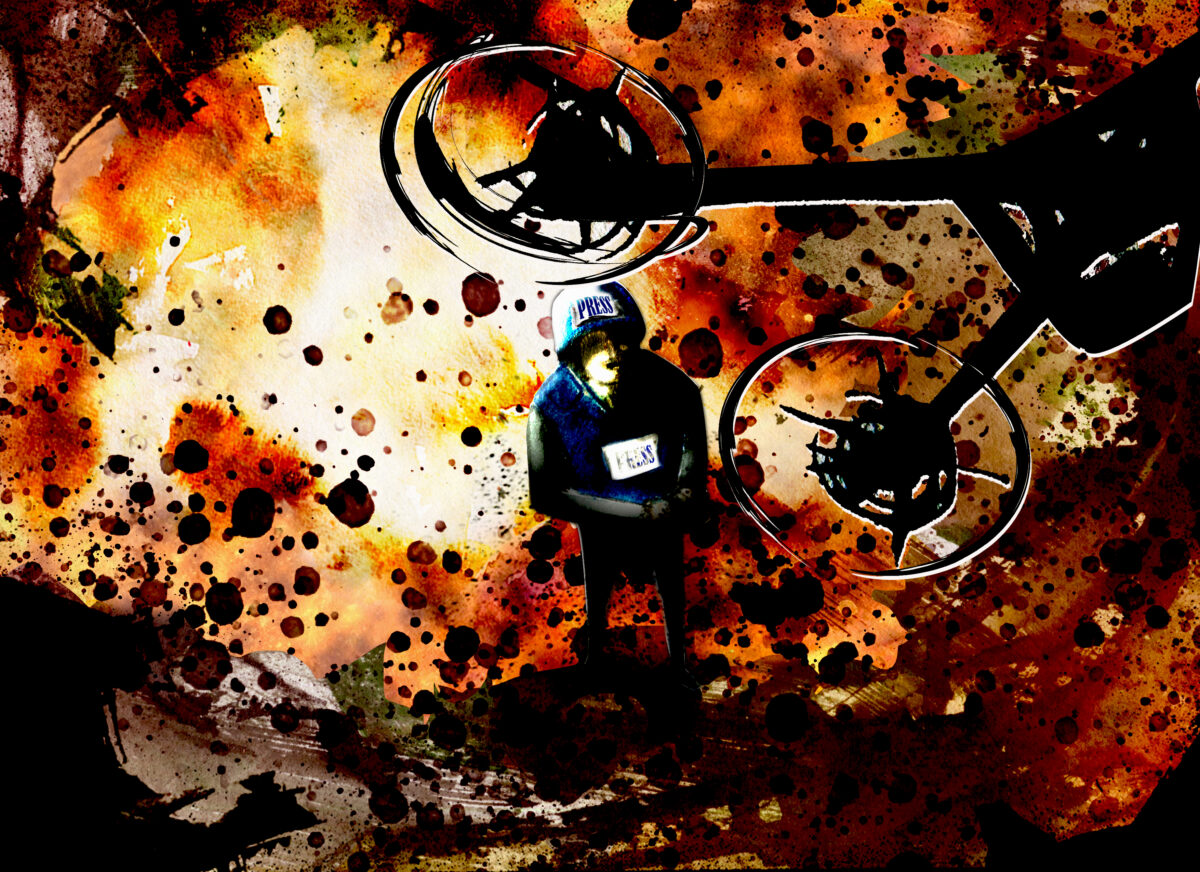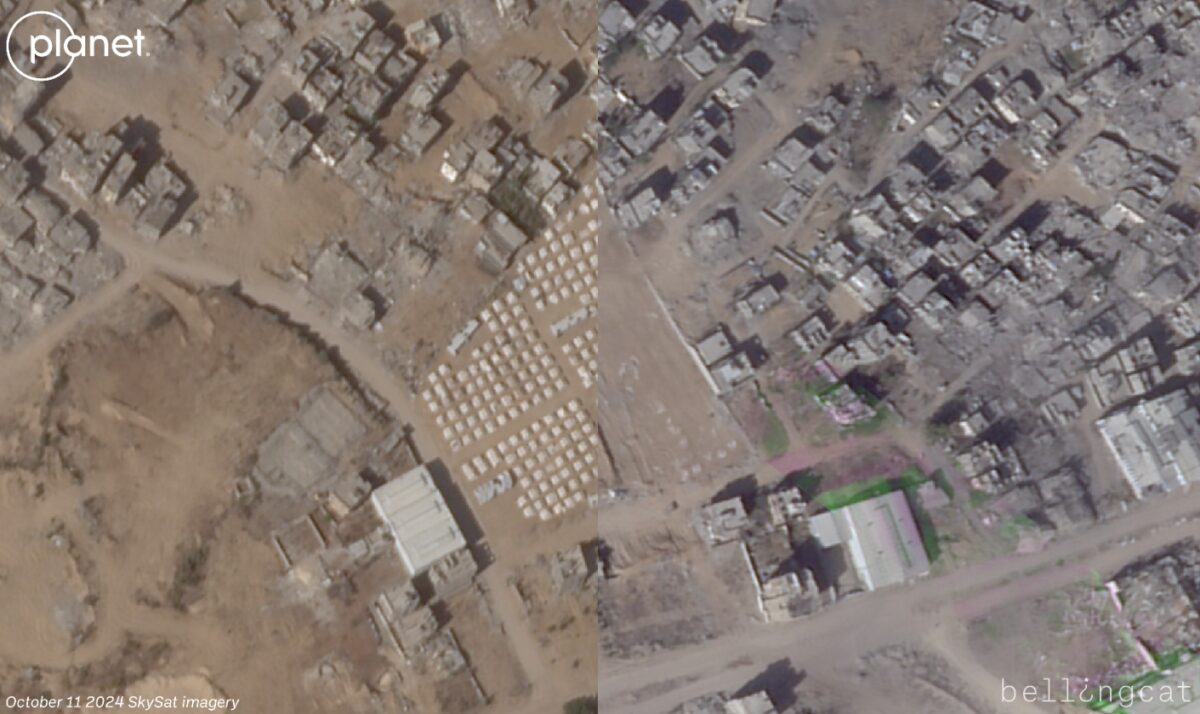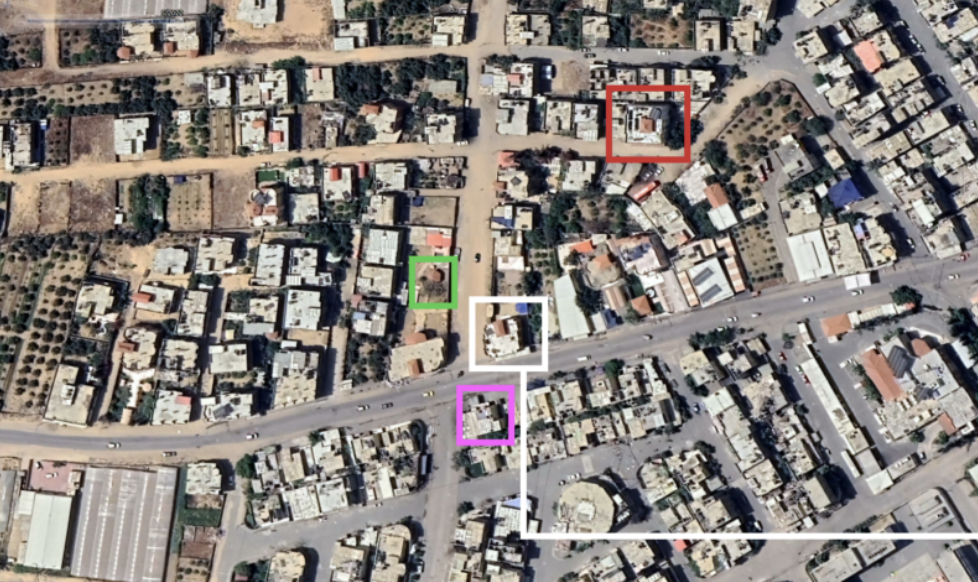Hamas Attacks, Israel Bombs Gaza and Misinformation Surges Online
Misinformation has been spreading rapidly online ever since Hamas launched a surprise attack on Israel on October 7. At least 1,000 people were killed and the Islamist militant group took between 100 and 150 hostages. Israel retaliated, threatening a complete siege of Gaza and hitting the area with multiple airstrikes, killing more than 900 people.
Alongside credible reports on the unfolding conflict, misinformation about incidents attributed to both sides have been widely circulated online. With the overwhelming amount of social media content on the conflict, it can be difficult to parse out verified information from posts that have been reused or manipulated.
In recent days, viral social media posts have presented years-old footage, or footage from entirely different conflict zones, as depicting the latest Israeli bombing of Gaza. They have baselessly claimed that a video of a lost girl in an Arabic-speaking country is an Israeli hostage in Gaza and have presented flares lit by Algerian football fans as the lights and explosions of a warzone. These are but a few examples.
Misinformation is particularly nefarious in this case as it often entwines authentic information with hearsay, and may lead to something genuinely worthy of record — such as a military strike in an urban area — becoming associated with a viral falsehood. Indeed, Bellingcat found one case where a widely shared video was said to show something false, while further investigation into the same video actually revealed important information about an airstrike in an area where there is a school.
The “Bombing” of Saint Porphyrius Church
On October 9, a video was widely circulated on X, the social network formerly known as Twitter, with the claim that it shows Israel bombing the Greek Orthodox Church of Saint Porphyrius. This 12th-century structure is one of Gaza’s most historic sites.
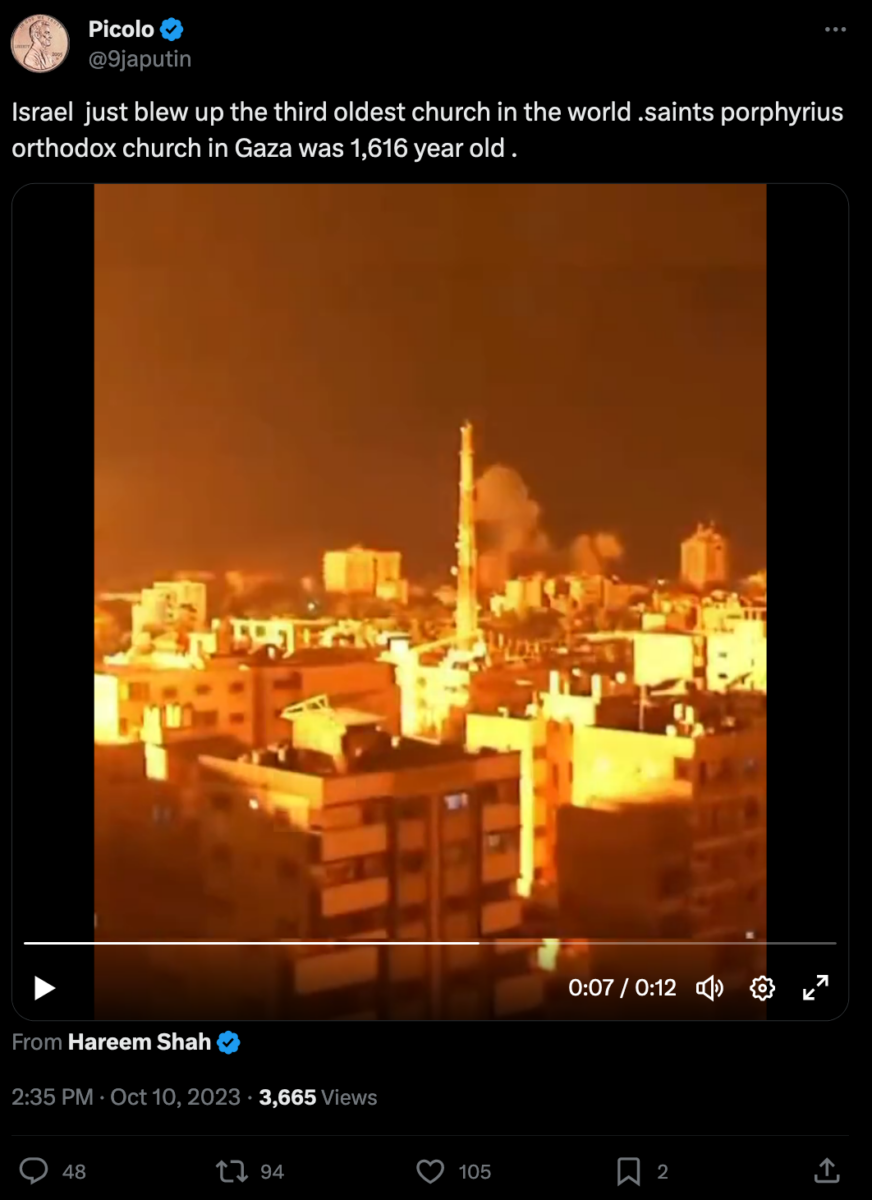
The church, however, denied the claim on its Facebook page that evening. “We would like to inform you that Saint Porphyrios Church in Gaza is untouched and operating in service of the community and our congregation,” read the announcement in Arabic, English, Greek and Russian.
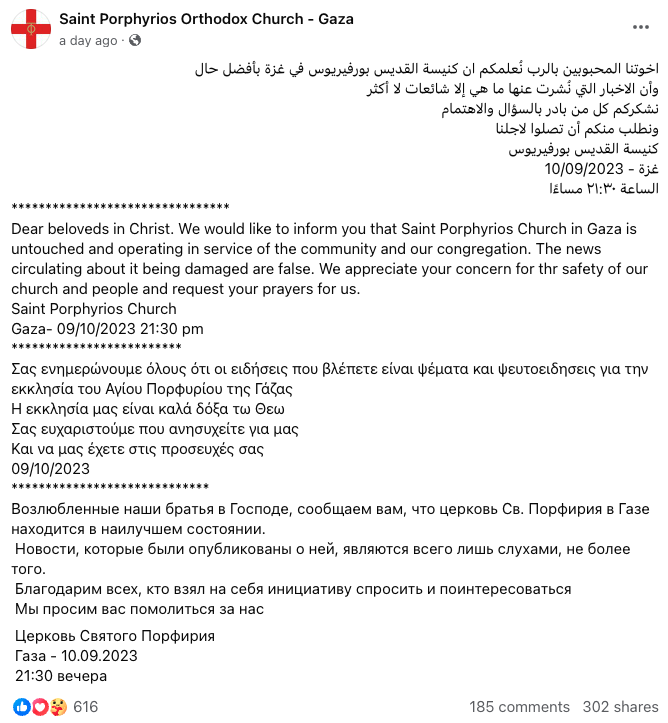
Bellingcat found that the airstrike captured in the viral video occurred near the intersection of Al-Rashid and Beirut Streets, at approximately 31.516746, 34.428689, behind the lattice tower visible in the clip.
We narrowed down the location by conducting a reverse image search of one of the frames of the viral video.
This led us to a panoramic video published on the website of Haber 7, a Turkish TV channel. This video, which is likely to be user-generated content, displays the area around the attack more clearly. Another piece of footage, broadcast by multiple news outlets and shared online, shows the same area being attacked at dawn.
One building’s signage, visible in the video of the attack shot at dawn and marked in green in the above image, reads “Al-Ragheb.” That is the name of a building in Gaza City located at 31.517335, 34.446814, close to a branch of the Bank of Palestine (31.518242, 34.445245), according to an August 2022 video of the area.

Based on our findings and the direction of the airstrike, we were able to discern that the target could have been roughly 1.5 km from the camera, towards the coast, and in the opposite direction of the church (31.5033228, 34.4597274).
Telegram channel Jenin Qassam shared a longer clip of the viral video which shows a second blast seconds apart.

The second attack did not impact the church. Based on the direction of the blast visible in the video, we were able to ascertain that the church falls outside the target area.
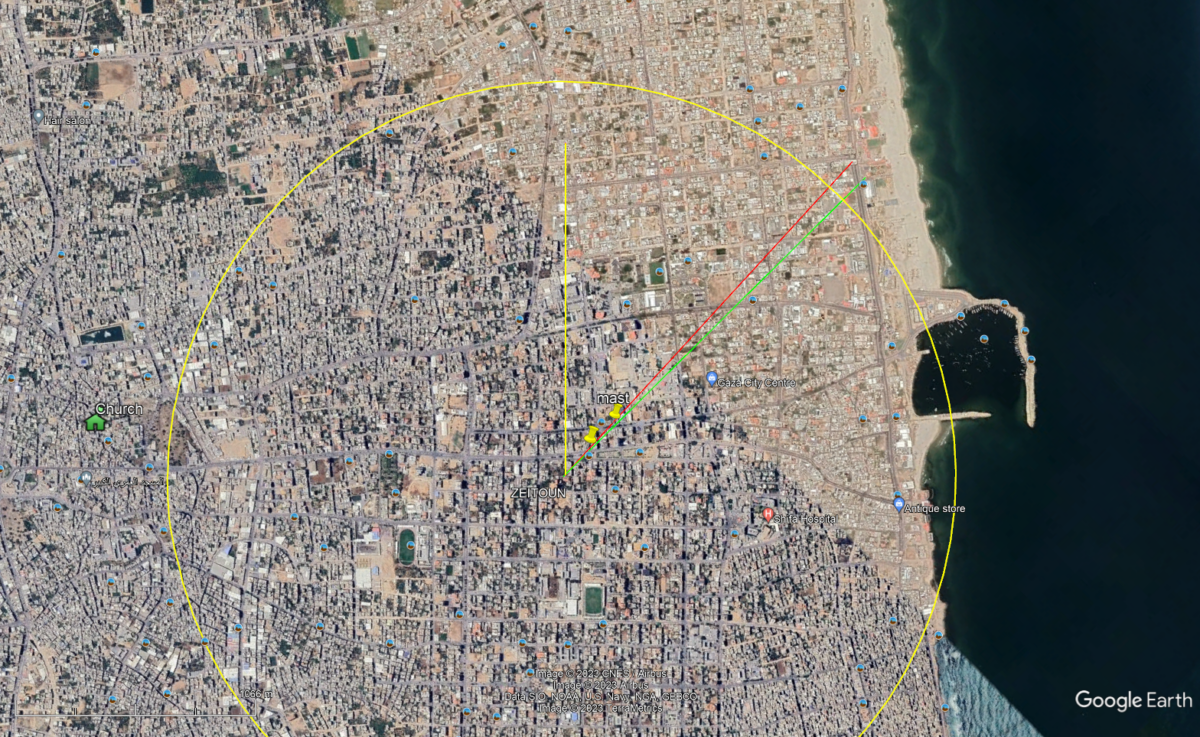
Even if the clip didn’t show what many of those sharing it thought it showed, it still revealed new information about the strikes on Gaza. In geolocating footage related to the viral video claiming to show the church site, Bellingcat found evidence that strikes occurred in densely populated areas in the vicinity of several schools. (On Monday, United Nations Secretary-General António Guterres, who condemned the attacks by Hamas and air strikes by Israel, said at a press conference that strikes hit two UNRWA schools.)
Telegram channel Jenin News, not to be confused with Jenin Qassam, shared a video that was filmed from the same location as the video falsely claiming to show an airstrike targeting the Saint Porphyrius church. The Jenin News video shows two airstrikes hitting an area much closer to the camera.
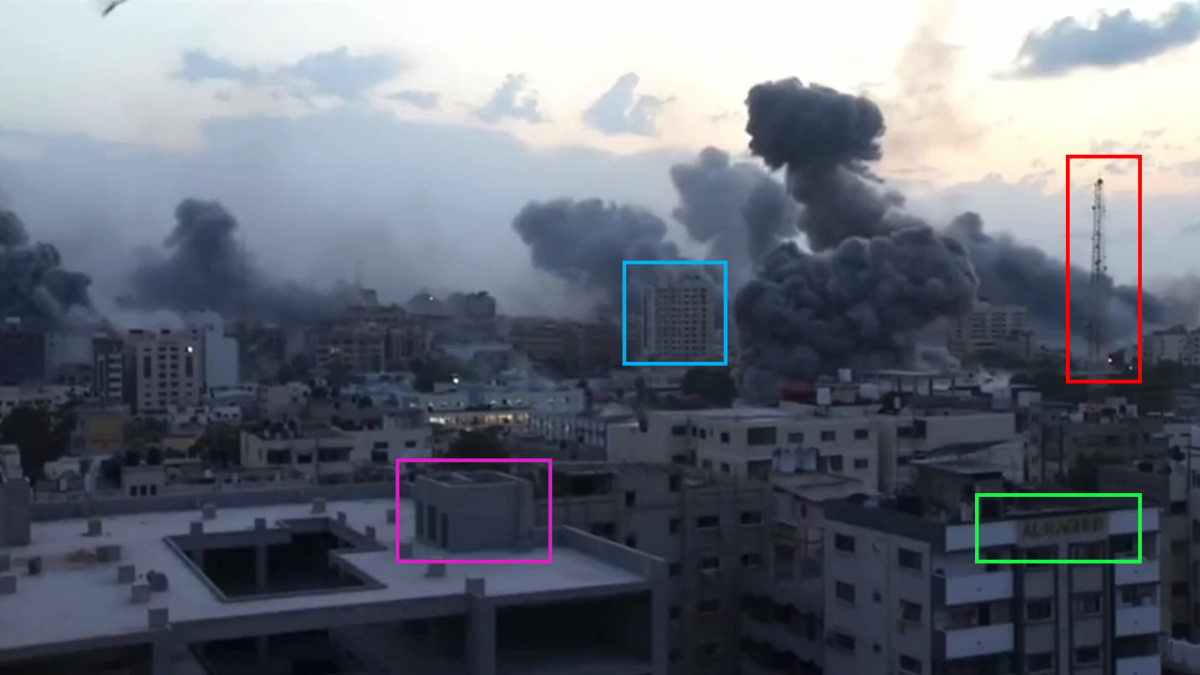
Two strikes appear to have hit the block further down from a tower. It is difficult to tell exactly where they hit, but we know it was between the block with the tower and the block with a building that is marked in Google Maps as the office of the Palestinian Centre for Human Rights (PCHR).
According to Google data, there is at least one school on the block between the tower and the PCHR location. A police headquarters is also located nearby, across an empty lot.

Where exactly the strikes hit is difficult to determine without more recent satellite imagery.
Recycled Conflict Footage
During breaking news events, there is often uncertainty about the claims we see on social media. As we discuss in our 2021 guide, determining when a video was filmed is an essential part of debunking dis- and misinformation.
We have identified multiple examples of footage being reused from past conflicts and military events as evidence of current events in Israel-Palestine.
For example, the video below, filmed at night, depicts multiple rockets being fired in quick succession, which is being circulated with the claim that they were fired at Israel by Hamas. While the video shows military activity, it does not show its impact or target.
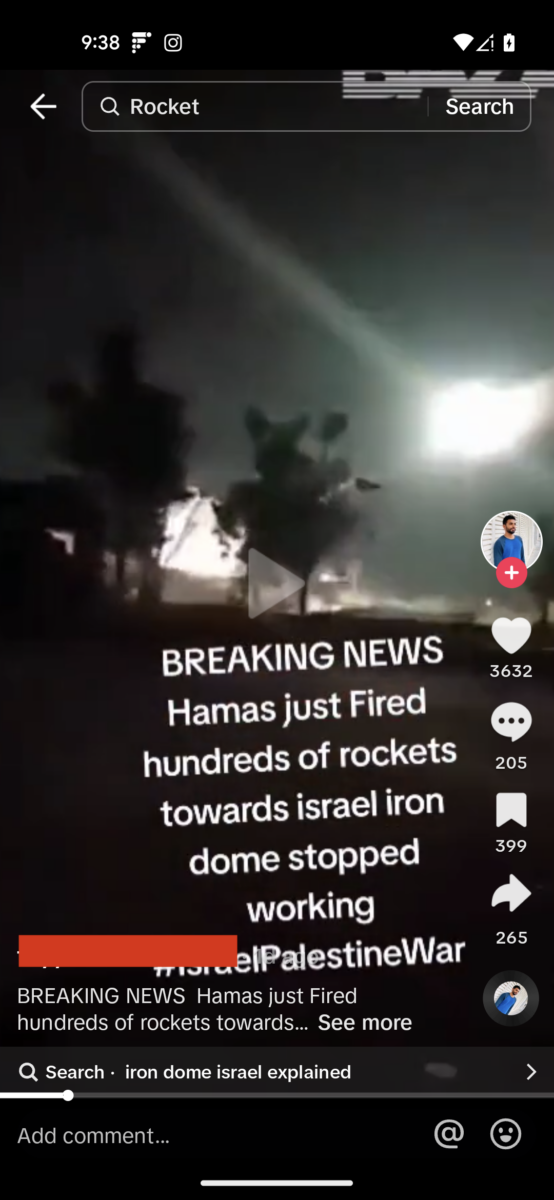

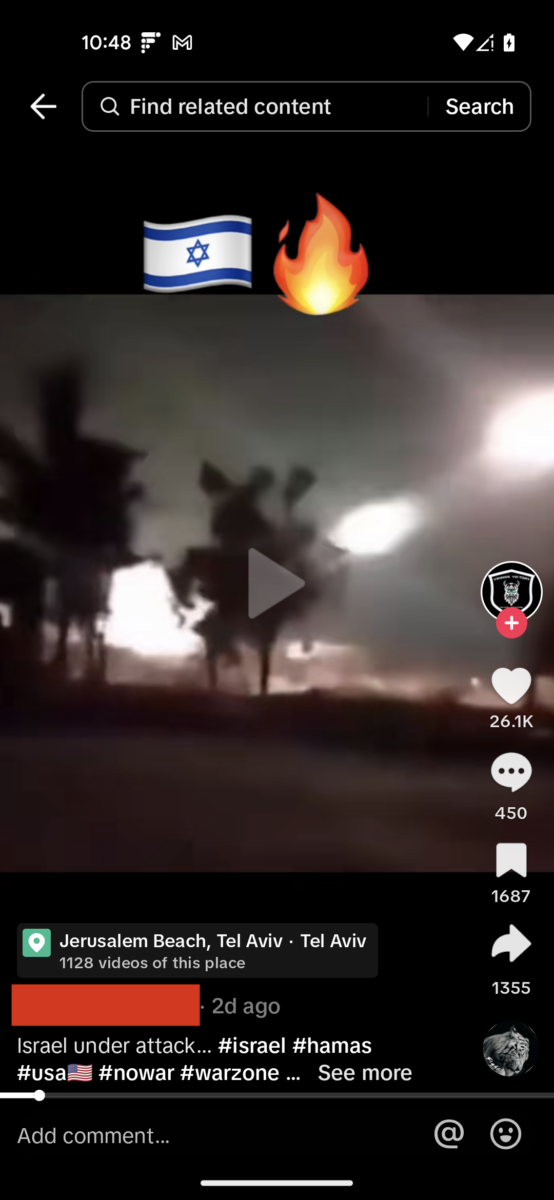
However, the video is at least three years old, as it was uploaded to YouTube in February 2020 by a Russian-speaking account called whose name translates as ‘World on the Brink.’ We also found recycled footage claiming to show recent Israeli strikes on Hamas. In fact, the below video of armed men is at least four years old, as it was uploaded to YouTube in March 2019. Bellingcat was not able to independently confirm the location depicted in the video, but the video title reads ‘Tonight in Syria was not calm’ in Russian.

We also found users on X sharing recycled footage which they claimed showed recent Israeli strikes on Hamas.


In fact, the video of armed men is at least four years old, as it was uploaded to YouTube by a Syrian TV channel in March 2019. Bellingcat was also not able to independently confirm the location depicted in the video, but the Arabic-language video title suggests that it shows an attack on a convoy in Syria.

Whatever the precise location of the two videos above, their appearance online several years ago is sufficient alone to debunk claims that they depict the recent escalations in Gaza.
In other cases, the location of footage which users falsely claimed to show the current conflict could be readily identified. One user on X pointed out misleading tweets claiming that the footage below shows attacks on Gaza by Israel.
On the morning of October 9, the X account of pro-government Syrian newspaper Al-Watan published footage of explosions in a cityscape with the words ‘scenes of the Israeli bombing of Gaza city’ in Arabic. Avichay Adraee, IDF Spokesperson for the Arab Media, posted a composite of three pieces of footage, the first of which also depicted this scene.
Al-Watan has since deleted their tweet. At the time of writing, Adraee’s tweet is still available.


This footage was neither filmed in 2023 nor was it filmed in Palestine.
When zooming in on the video, we noticed the distinctive shape of this schoolyard with a basketball court, highlighted in both images below in blue. It could easily be matched to satellite imagery of Ariha, a town in the Idlib Governorate of northern Syria (35.810781, 36.614178).
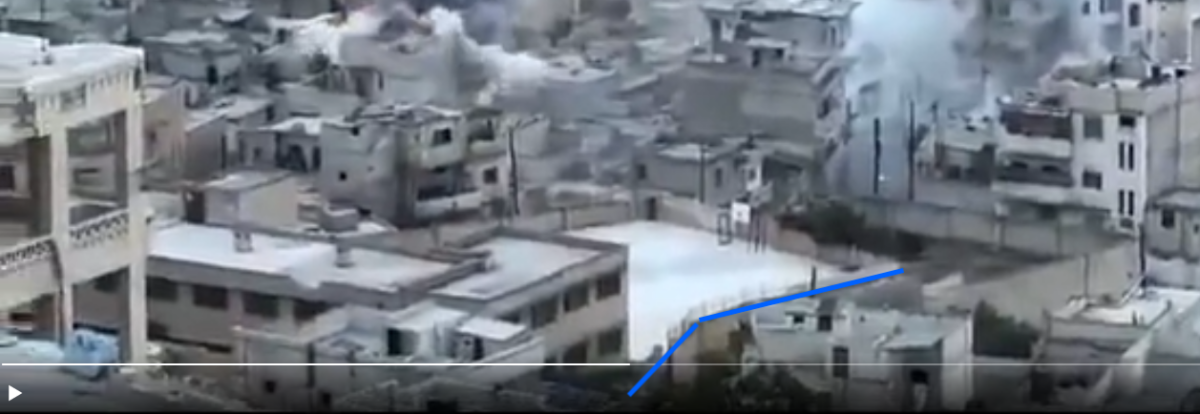
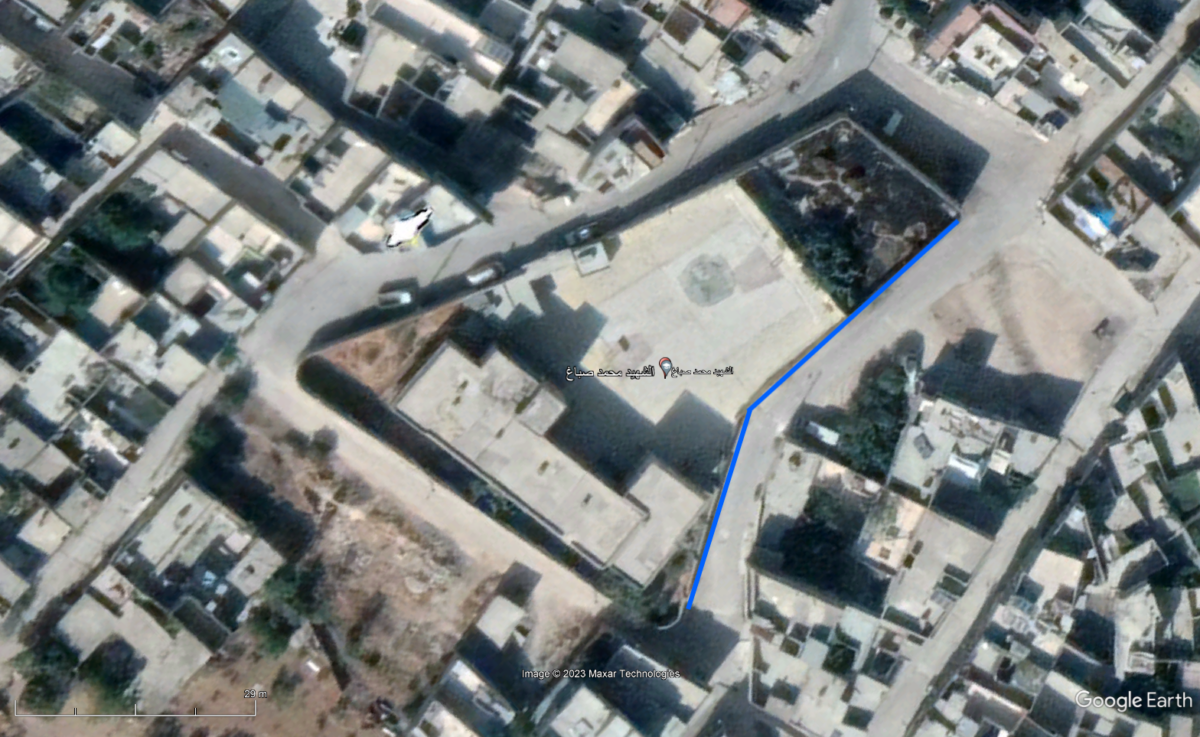
The cameraperson, who films the city from higher terrain to the south of the town, pans slightly to their left where we can see a building with a distinctive triangular indent in its roof, highlighted in the images below in purple. We were also able to locate this building as being only a few blocks away from the schoolyard above (35.809395, 36.615493).

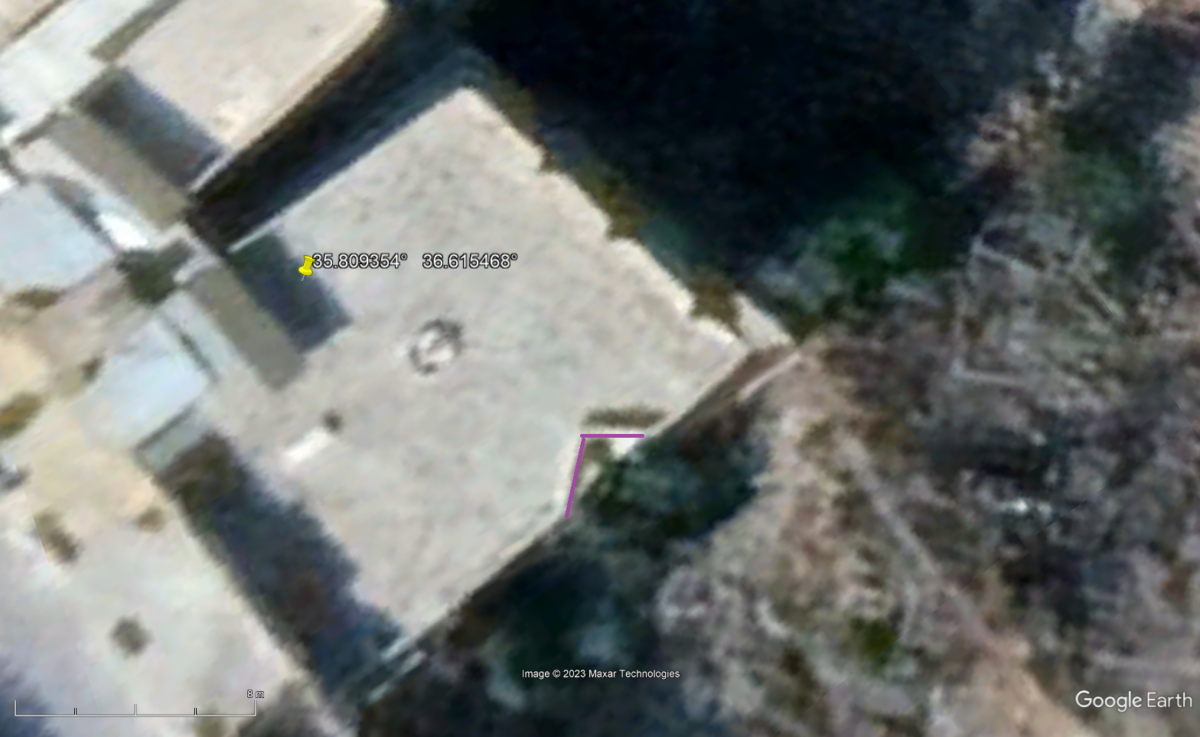
Several accounts also suggested that this footage was not only from Syria but also depicted earlier events. The X account of On the Ground News posted a video of the same attack, identifying it as taking place in Syria in 2021.

AirWars, an independent project to catalogue civilian harm caused by bombing campaigns in the Middle East, also investigated this incident. The website’s database entry incident R2349 details a June 2021 attack on the city of Ariha which includes additional information about this incident. AirWars shared a collage of imagery of the attack; the bottom left photo matches the footage shared earlier.

Given the long history of tension along the Gaza Strip and Israel’s bombing of the area, there is already a large archive of video content showing destruction and violence in that region. Older videos from prior incidents are being reused to represent current events.
For example, this video depicts a building located in Gaza. In the video, we see debris exploding from the building.

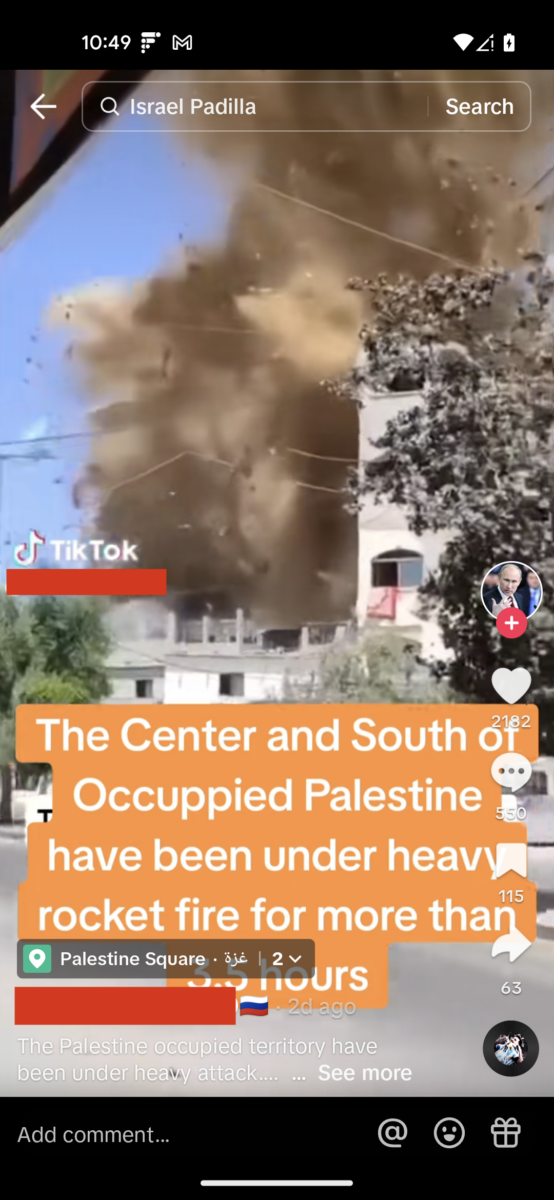
However, it appears that this video is not recent. In a Tweet, open source investigator and Bellingcat contributor Chris Osieck confirmed the location of the video in the north of the Gaza Strip (31.538361,34.534972) and found the video that was shared on May 13, 2023 during that month’s fighting.


Another video spreading online depicts a building in Gaza being hit by a missile and collapsing. There are multiple videos filmed from different angles showing the building collapsing. In some videos, a man can be seen filming the collapse in the foreground.
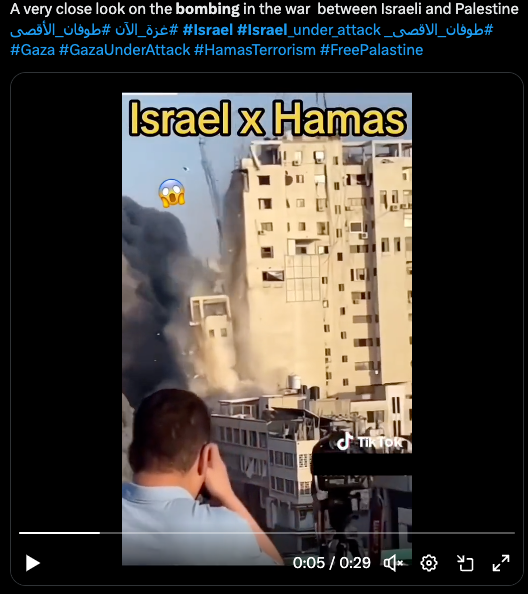

While this missile attack did happen in Gaza, the incident is actually from 2021. It was captured live on the air during a report by BBC, as pointed out by journalist Shayan Sardarizadeh of the BBC Verify team.
Recycled Non-Conflict Footage
Misinformation can also be spread using imagery that doesn’t show conflict or violence. There are numerous examples of videos being decontextualised from their original source to appear relevant to the current Israel-Hamas attacks.
For example, there is a video that depicts multiple paragliders with a sunset in the background. There are some palm trees and a building shown in the video. Accounts are claiming these are Hamas soldiers paragliding into Israel.


However, this video does not take place in Israel. Reuters was able to geolocate this video to Egypt. The building shown in the video is a military academy and can be found at (30.108686, 31.358481), in Cairo’s El Nozha district.
We were able to locate an older version of this video shared on TikTok on 24 September 2023. The coat of arms of this institution can be seen in the foreground of this original footage — though in the misleading TikTok video claiming it was filmed in Israel, this detail are obscured by the caption in red, while the entire building has been cropped out from the version shared on X.
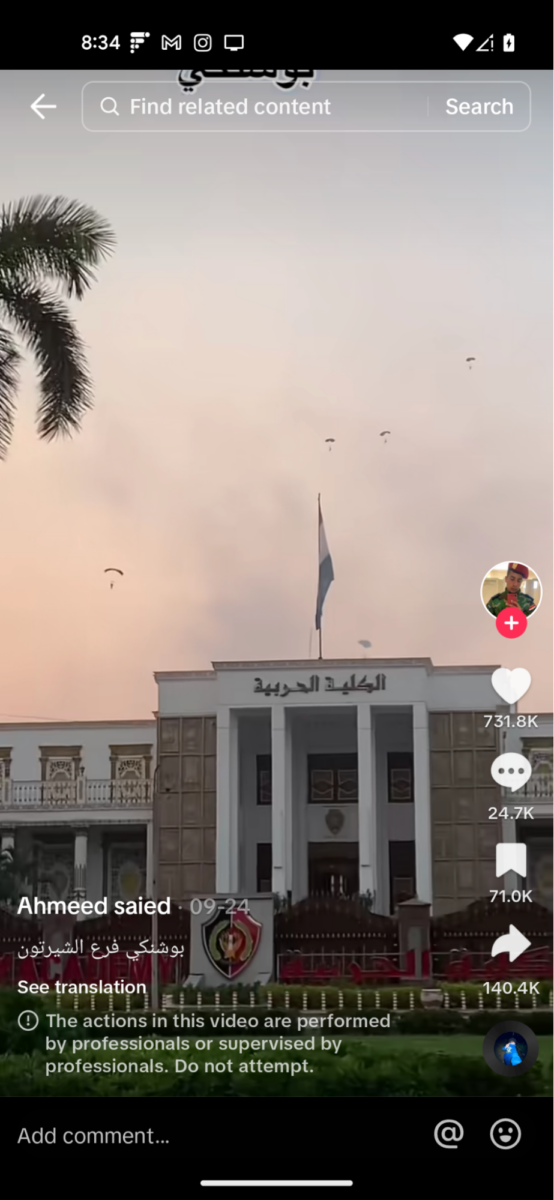
A gruesome video of a girl burned alive by a mob was shared with the false claim that she was one of the attendees at the Supernova music festival near Kibbutz Re’im in the desert of southern Israel who was believed to have been taken hostage by Hamas.
The video is overlaid with a male voice speaking in Arabic. While the video was recorded in the open air, the man’s voice has a clear echo as though he was recorded in a room.
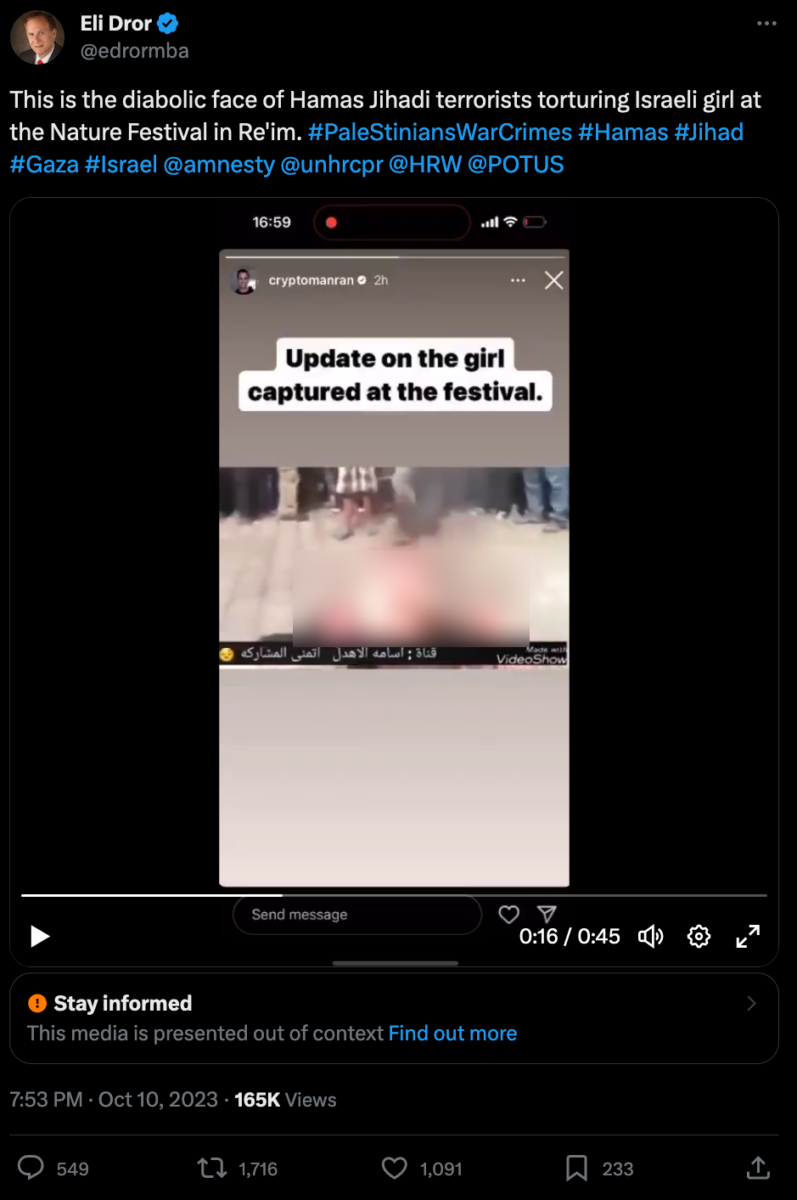
However, the incident shown is eight years old and from Guatemala. A 16-year-old girl was “beaten and burned to death in the Guatemalan village of Rio Bravo,” reported CNN in 2015.
As the Indian media outlet Alt News reported in 2019, this particular video often recirculates with false contexts in different parts of the world.
There are other examples of reused content from outside Israel-Palestine. A video from Algeria that shows football fans celebrating with fireworks has been shared by users on X as showing “Israel’s response to Hamas”.
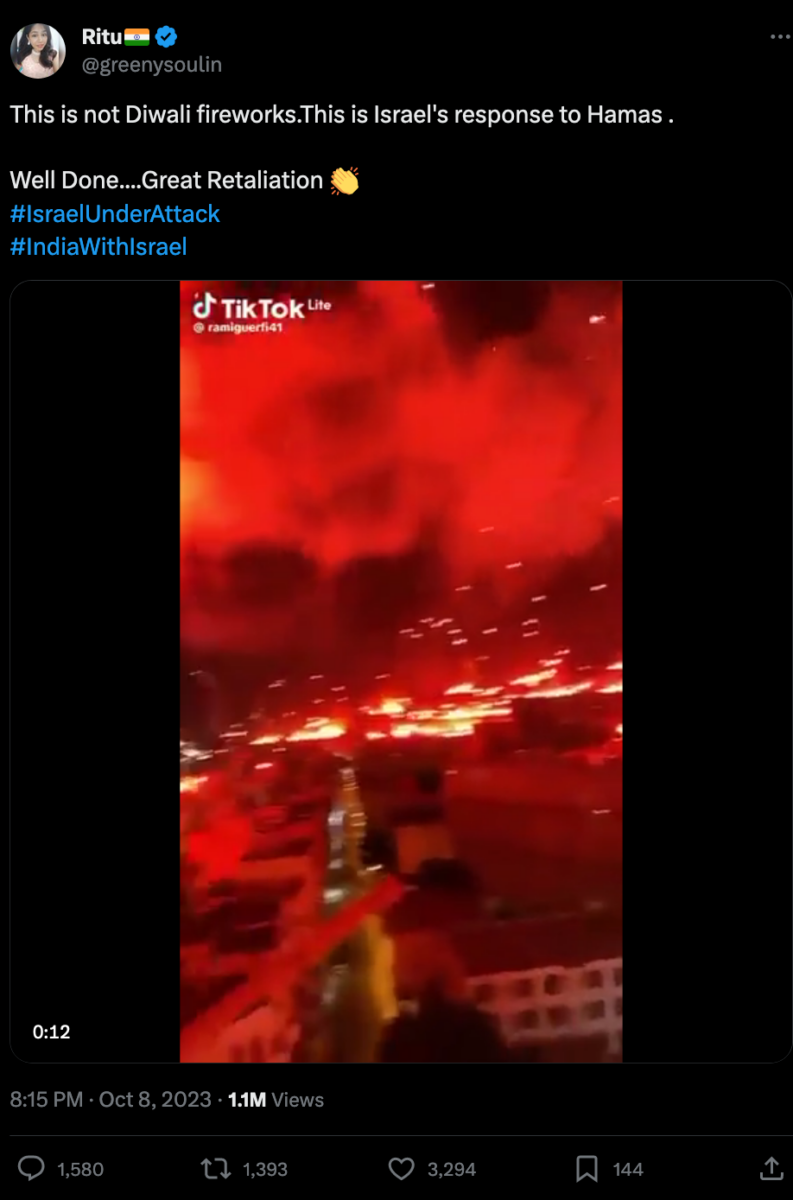
The claim was debunked by several users on X who pointed out that it shows the 102nd-anniversary celebrations of Algiers-based football club MC Alger. Pictures of the event showing similar red fireworks were shared by a football fan on X in August.
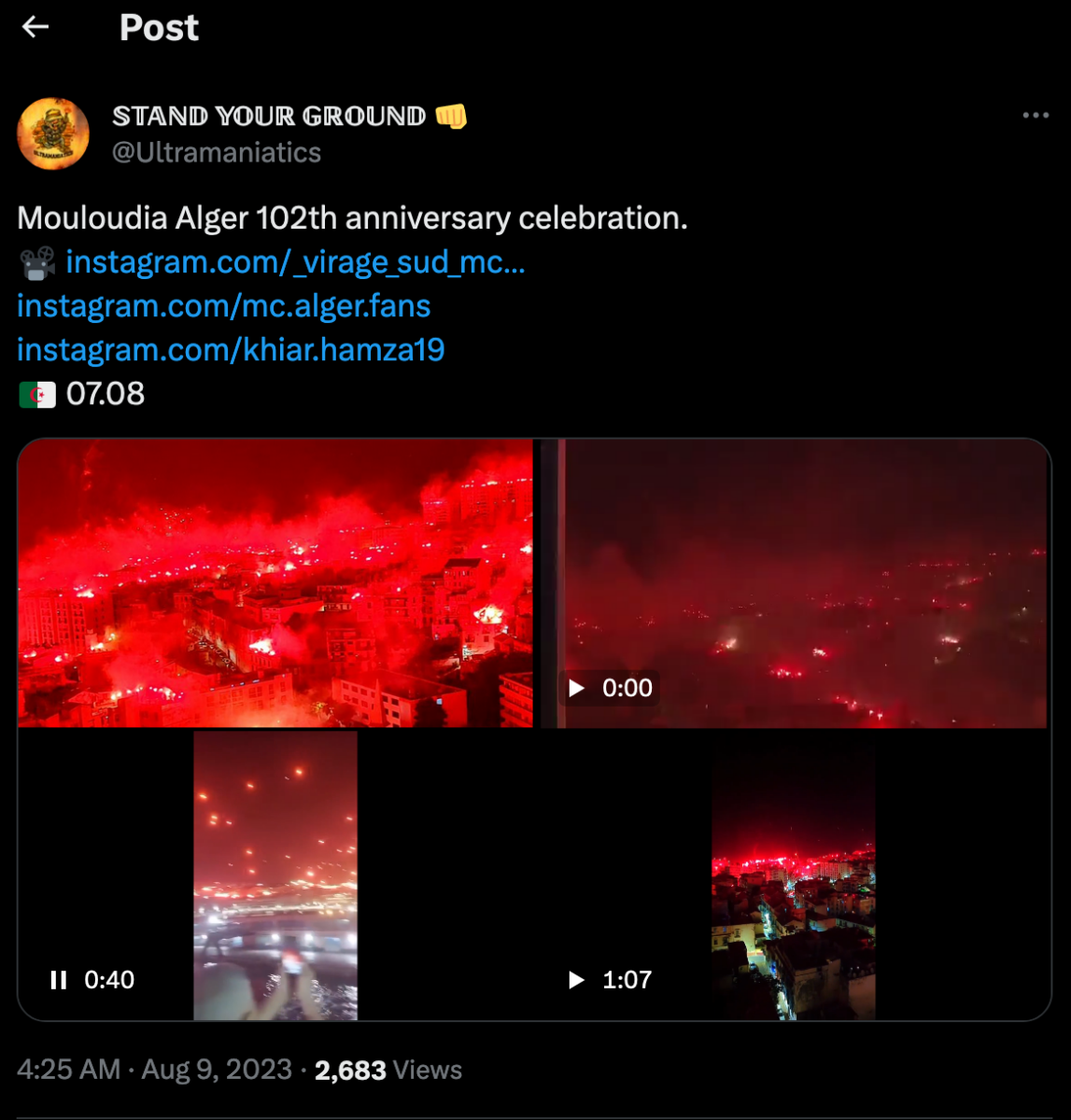
The first instance of this video which Bellingcat could find was uploaded by a TikTok user on September 28, about a week before the recent attacks. He has since deleted the video but an archive of the Google cache is here.
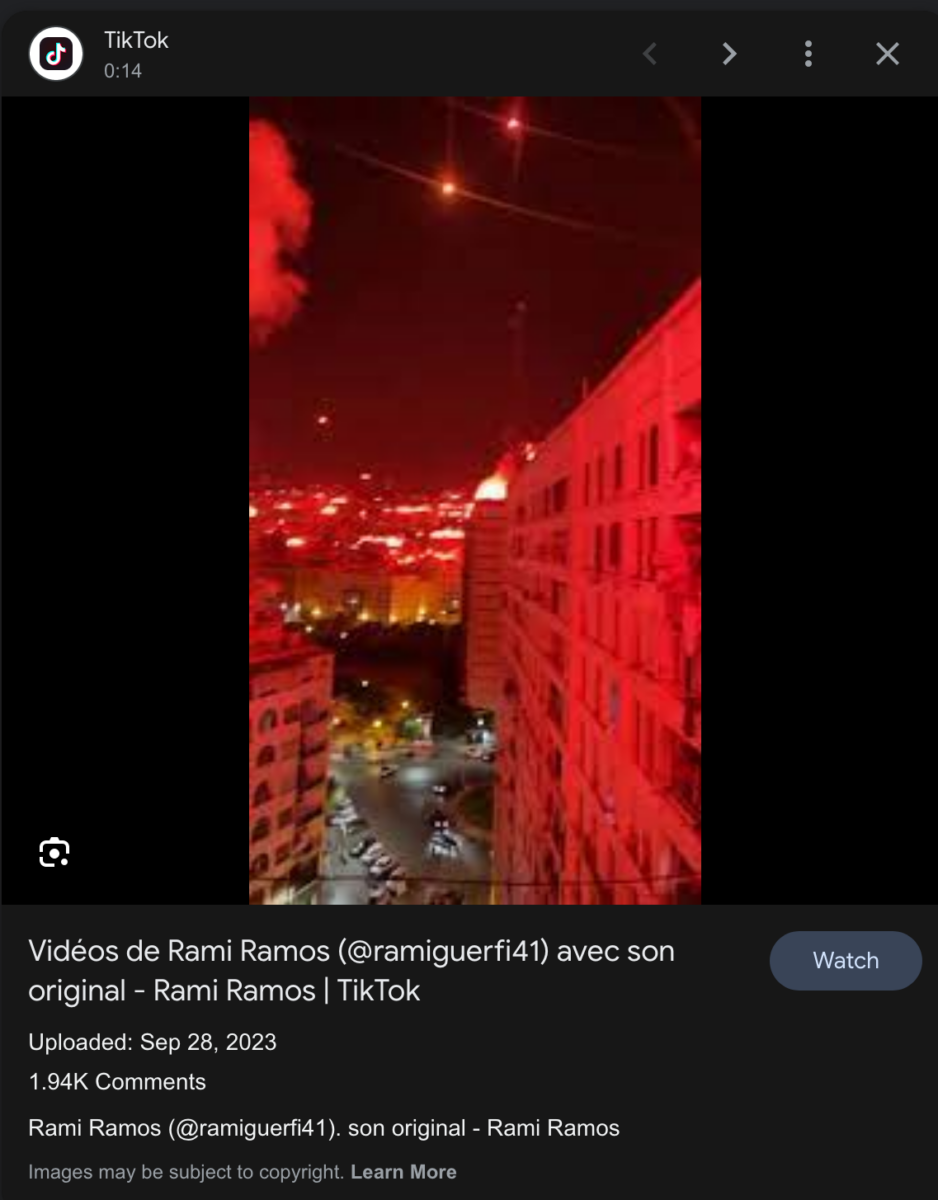
Bellingcat geolocated this video to Algiers (36.7601417,3.0574417). Place El Mokrani, a roundabout in the city centre, can be seen from the cameraperson’s field of view.

A further example of misleading footage example came in the form of a video showing a man talking with a small child. It was presented as evidence that Hamas militants had kidnapped a Jewish child.


However, this same video was shared to TikTok on 8 September 2023, a month before the latest escalations. There is no evidence to suggest that this girl was kidnapped by Hamas.

A Reuters fact-check translated the audio from the TikTok video, in which two men ask a lost girl in a public place where her parents are. The user has since deleted the video from TikTok after it received abusive comments seemingly prompted by its recent misleading portrayal.
Verification and Vigilance
Some of the examples above received thousands of views and continue to circulate online. Several of them have been shared by the accounts of NGOs and news organisations on social media, as well as by prominent individuals with verified accounts on the same platforms.
Importantly, these cases did not require sophisticated image manipulation techniques to convince users that the imagery was credible enough to be amplified. They were simply miscontextualised and misrepresented, knowingly or unknowingly, by those who initially posted them.
In an already incredibly volatile media environment, this heightens the need for caution when amplifying inflammatory claims about a fast-moving situation. Bellingcat continues to monitor the latest war in Israel-Palestine, including the IDF’s bombing of the Gaza Strip, with the aim of documenting civilian harm.
Kolina Koltai, Carlos Gonzales, Pooja Chaudhuri and Youri van der Weide contributed research.
Bellingcat is a non-profit and the ability to carry out our work is dependent on the kind support of individual donors. If you would like to support our work, you can do so here. You can also subscribe to our Patreon channel here. Subscribe to our Newsletter and follow us on Twitter here and Mastodon here.
